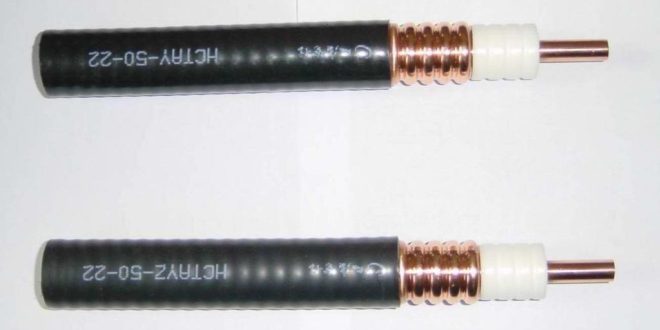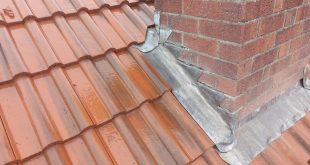A feeder cable is a crucial element in radio frequency (RF) communication systems. It serves as a conduit for transmitting signals between antennas and transceivers, ensuring minimal loss of signal strength during transmission. Understanding the role of RF feeder cables and the different feeder cable types is essential for optimizing communication systems in both commercial and industrial settings. This article provides an overview of feeder cables, their types, and their importance in RF applications.
What is a Feeder Cable?
A feeder cable is a type of coaxial cable that connects an antenna to a transmitter or receiver. Its primary function is to carry radio frequency signals with minimal attenuation, maintaining signal integrity from the source to the destination. These cables are designed to handle high-frequency signals, making them ideal for RF communication, cellular networks, broadcasting systems, and satellite communications.
The term “feeder” refers to the cable’s role in feeding the signal from one point to another, often between a radio or TV transmitter and an antenna located at a considerable distance. In RF systems, ensuring that the feeder cable minimizes signal loss is critical for efficient communication.
Key Features of RF Feeder Cables
Low Signal Loss
One of the main characteristics of a feeder cable is its ability to minimize signal loss. In RF communication, signal loss during transmission can degrade the quality and range of communication. RF feeder cables are designed to maintain high levels of signal strength over long distances, ensuring that the transmitted signal arrives at the destination with minimal attenuation.
Impedance Matching
RF feeder cables are built with a specific impedance, typically 50 ohms or 75 ohms, depending on the application. Proper impedance matching between the feeder cable, the transmitter, and the antenna is crucial for reducing signal reflection and maintaining signal integrity. This ensures optimal performance in RF systems, reducing the risk of interference and signal degradation.
High Power Handling
In applications like broadcasting and cellular communication, feeder cables need to handle high levels of power. Feeder cables are designed to support the transmission of high-power RF signals without overheating or causing signal loss. This makes them ideal for use in high-power applications where reliable communication is essential.
Types of Feeder Cables
Several feeder cable types are available, each designed for specific applications. Choosing the right type of feeder cable depends on factors like signal frequency, distance, power requirements, and environmental conditions. Below are the most common types of feeder cables used in RF systems:
1. Coaxial Feeder Cables
Coaxial feeder cables are the most commonly used type of feeder cable in RF communication systems. They consist of a central conductor, an insulating layer, a shielding layer, and an outer protective layer. The shielding layer prevents interference from external sources, making coaxial cables ideal for RF applications.
- Low-loss coaxial cables: These cables are designed for long-distance signal transmission with minimal signal attenuation. They are often used in cellular communication, broadcasting, and satellite systems.
- Flexible coaxial cables: These cables are highly flexible and easy to install in tight spaces. They are commonly used in mobile communication systems and other applications where flexibility is important.
2. Heliax Feeder Cables
Heliax feeder cables are a type of coaxial cable known for their low attenuation and high power-handling capabilities. They are often used in applications that require long-distance transmission, such as cellular networks and broadcasting towers. Heliax cables are designed with a corrugated outer conductor, which provides better flexibility and durability compared to standard coaxial cables.
3. Twinaxial Feeder Cables
Twinaxial feeder cables are similar to coaxial cables but feature two inner conductors instead of one. These cables are designed to reduce signal loss and interference in high-frequency applications. Twinaxial cables are often used in data centers, high-speed networking, and other RF applications where high data rates are required.
4. Waveguide Feeder Cables
Waveguide feeder cables are designed for high-frequency signal transmission in applications like microwave and satellite communication. Unlike coaxial cables, waveguides do not have a central conductor; instead, they use a hollow, metal tube to guide electromagnetic waves. Waveguide cables offer minimal signal loss at extremely high frequencies but are less flexible than coaxial cables.
5. Rigid Line Feeder Cables
Rigid line feeder cables are a type of feeder cable used in high-power RF applications, such as broadcast transmitters and military communication systems. These cables consist of two metal conductors, typically copper, housed in a rigid metal tube. Rigid line feeder cables are highly durable and can handle extreme power levels, making them suitable for long-distance, high-power communication.
Applications of Feeder Cables
Feeder cables play a vital role in a wide range of RF communication applications. Their ability to transmit high-frequency signals over long distances with minimal loss makes them indispensable in several industries. Some of the most common applications include:
1. Cellular Networks
In cellular communication systems, RF feeder cables connect base stations to antennas, ensuring reliable signal transmission across the network. These cables help maintain signal strength and clarity, providing consistent communication even in areas with heavy traffic.
2. Broadcasting Systems
Feeder cables are widely used in radio and television broadcasting systems. They connect transmitters to antennas, ensuring that broadcast signals reach their intended audiences with minimal interference. Low-loss feeder cables are essential for long-range broadcasting, especially in remote areas.
3. Satellite Communication
In satellite communication systems, feeder cables transmit signals between satellite dishes and transceivers. These cables must be able to handle high-frequency signals and maintain signal integrity over long distances. Waveguide feeder cables are often used in satellite communication due to their ability to guide high-frequency signals with minimal loss.
4. Military and Defense
In military communication systems, feeder cables are used to transmit secure, high-power signals over long distances. These cables are designed to withstand harsh environmental conditions, ensuring reliable communication in the field. Rigid line feeder cables are often used in military applications due to their durability and high power-handling capabilities.
5. Amateur Radio
Amateur radio operators use feeder cables to connect their transceivers to antennas. The quality of the feeder cable directly affects the clarity and range of the transmitted signals. Low-loss coaxial cables are commonly used in amateur radio setups to ensure reliable communication over long distances.
Benefits of Using High-Quality Feeder Cables
Signal Integrity
High-quality RF feeder cables help maintain signal integrity, ensuring that transmitted signals reach their destination without significant loss or degradation. This is critical in applications like broadcasting, cellular communication, and satellite systems, where signal clarity is essential for reliable communication.
Durability
Feeder cables are often exposed to harsh environmental conditions, such as extreme temperatures, moisture, and UV radiation. High-quality feeder cables are designed to withstand these conditions, ensuring long-term durability and reliable performance. The use of weather-resistant materials and advanced shielding helps protect the cables from damage.
Cost-Effectiveness
While high-quality feeder cables may have a higher initial cost, their long-term durability and reliability make them a cost-effective solution. Investing in premium RF feeder cables reduces the risk of signal loss, interference, and cable failure, leading to fewer maintenance costs and system downtime.
Conclusion
Feeder cables are an essential component of RF communication systems, ensuring that signals are transmitted efficiently and with minimal loss. With a variety of feeder cable types available, including coaxial, heliax, twinaxial, waveguide, and rigid line cables, there is a solution for every application. By choosing the right type of RF feeder cable, users can optimize their communication systems, improving signal quality and overall performance
 Diverse Perspectives: Insights & Stories Exploring Ideas, Sharing Knowledge
Diverse Perspectives: Insights & Stories Exploring Ideas, Sharing Knowledge





